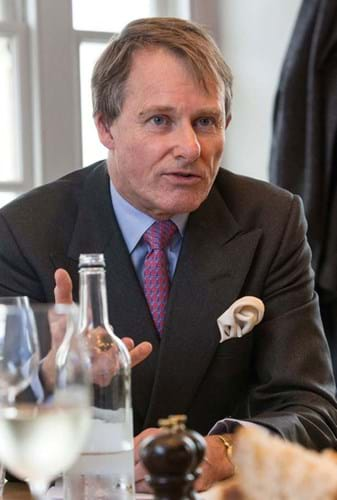I have a close, personal interest in the subject. My great-grandfather founded the BADA in 1918, as he considered that it was important for the trade to have an organisation that could speak as one voice to politicians and to give confidence to the general public that they would be buying from reputable and honest dealers.
Those two founding principles are, if anything, even more relevant today because of the threats we face.
1. Industry challenges
Take the threat of a ban on dealing in anything that has ivory, which cannot be overstated; this affects our ability to trade in many of the best pieces of English furniture as these frequently have small pieces of ivory as part of the fabric of the piece.
Then there are the restrictions on endangered woods such as rosewood, together with tortoiseshell, which add another layer of bureaucracy around obtaining CITES licences.
2. Brand clarity
Your panel pointed out the extra benefits a merger would have for dealers wanting to do two fairs. On this point, it must be very confusing for the general public to have BADA’s fair in March and LAPADA’s in September, featuring many of the same dealers.
If a survey was done asking the general public, I cannot imagine many could tell the difference between the two fairs, when the quality of the dealers, and the items exhibited, are the same in both. It must therefore make commercial sense to have one brand name marketing the two fairs.
3. A broader church
For my colleagues in favour of keeping the BADA separate, their reservation is that the BADA brand name will be downgraded by having in its ranks dealers who do not deal in the quality of items expected of BADA dealers.
“Although both organisations have discussed the idea of merging, neither has put the idea to the whole membership
My question to them is, does it matter if somebody is dealing in lesser items, provided that they are being honest in what they sell? Art is so difficult to evaluate when it comes to quality and its desirability is constantly changing.
All these arguments aside, BADA president Victoria Borwick MP has advised that we would be in a much stronger position if represented by one organisation rather than two, as politicians take more notice of organisations with larger numbers of members.
This, in my opinion, would be reason enough for the BADA to merge with LAPADA.
Although both organisations have discussed the idea of merging, what neither have done is put the idea to the whole membership.
We live in a democratic society and the two councils have a duty to do what is best for all their members. Asking their respective membership to vote on this would be a very sound next step.
Frank Partridge
Via email
It is the time to pool resources
MADAM – I do enjoy your publication’s weekly arrival on our doorstep and read the ‘State of the Trade’ write-up with particular interest, especially when the main trade associations were discussed by the panel.
I was a long-term member of LAPADA but discontinued my membership to focus my support on the BADA alone.
The main reason for my decision was the duplication of the benefits derived from membership as discussed at the round table, which include two codes of practice, legal/ financial advice, beneficial insurance rates, and so on.
The BADA is a very different organisation now, with a much more inclusive and up-to-date business approach than in the past.
So, in common with most of your panellists, I would support wholeheartedly a merger of the two associations and a pooling of resources, especially in these times of increasing difficulty in getting new, younger clients on board and burdensome bureaucracy.
Nigel Raffety
Raffety Ltd
Kensington Church Street, London W8
Would a merger between BADA and LAPADA be good for the trade? Send us your views to editorial@antiquestradegazette.com













